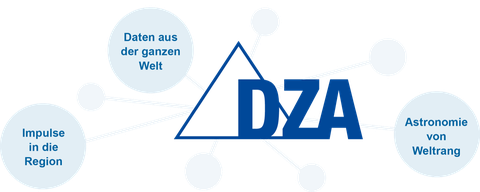May 18, 2021
Science initiative for German Center for Astrophysics in Lusatia
Research and technology center promises location advantages for Germany and the Saxonian region
An initiative of leading scientists led by Prof. Dr. Günther Hasinger, research director of the European Space Agency (ESA), is advocating the establishment of the German Centre for Astrophysics (DZA) to be located in Lusatia. The initiative, which is supported by scientists from the Max Planck Society, the Leibniz Institute for Astrophysics Potsdam, the Helmholtz Association, among them DESY, and the Technical University of Dresden, submitted its proposal for the new research centre to the ideas competition “Wissen schafft Perspektiven für die Region!“ organized by the German Federal Ministry of Education and Research (BMBF) and the Free State of Saxony. The competition calls on outstanding scientists to submit proposals for the establishment of large-scale research centres in order to determine the thematic focus and exact location of two new large-scale research centres in Lusatia in Saxony and in the central German mining region.
Astrophysics is “booming”. The branch of science combines high technology with the creativity of brilliant minds. Half of the Nobel Prizes in physics in the last ten years have been awarded to astrophysicists.
“New methods have been added to the classical methods of astronomy, whose “eyes” receive electromagnetic radiation. For example, gravitational wave telescopes that listen into space like “ears,” said Hasinger, leader of the project. “With a German centre for astrophysics, we would take up the impetus of this research field for Germany. We therefore propose to establish the German Center for Astrophysics (DZA) in Lausitz, where we combine eyes, ears and brain,” said Hasinger, who is also available to serve as founding director for the centre.
The German Centre for Astrophysics can have a lasting impact on and help shape structural change in Lusatia, create jobs in diverse fields and form cooperative ventures with research centres in the Czech Republic and Poland. It would be a milestone for research and technology in the region in the centre of Europe.
The concept consists on three pillars:
- First, the data streams of future large telescopes, such as the Square Kilometre Array and the Einstein telescope, are to be bundled and processed in Saxony. They account for several times the data traffic on today´s internet and require new technologies. The centre is to tame the data tsunami and will therefor accelerate the digitization of Germany.
- The second pillar will be a technology centre where, among other things, new semiconductor sensors, silicon optics and control technologies for observatories will be developed. Building on the experience and modern environment of industry in Saxony, this will create new companies and further high-quality jobs through spin-offs.
- Thirdly, the settlement of the European gravitational wave observatory Einstein Telescope, which is already in the planning stage, in the Granit-Stock of Upper Lusatia is to be examined.
"Given the volume, size, and complexity of the expected data from the large-scale astrophysical instruments, the required computing infrastructure must reach a level of performance that is currently not available in Germany. We are talking about data intensity on a scale unimaginable even today. For example, it is a matter of efficiently analyzing and evaluating high-resolution images from space - with image sizes of up to a petabyte. For this, the design of the computer architecture must be completely rethought and set up. Another immense challenge is, for example, the extraction of the actually relevant information from these huge data streams in real time. Here, suitable efficient computing and machine learning methods urgently need to be developed and applied," explains Prof. Nagel, Director of the Center for High Performance Computing and Information Services at the TU Dresden, full of enthusiasm to be involved in such a project.
Partners
- Prof. Dr. Günther Hasinger, ESA Director of Science, Head of ESAC
- Prof. Dr. Michael Kramer, Director at the Max Planck Institute for Radio Astronomy and President of the Astronomical Society
- Prof. Dr. Christian Stegmann, Director of Astroparticle Physics, German Electron Synchrotron - DESY
- Prof. Dr. Matthias Steinmetz, Scientific Director and Chairman of the Executive Board, Leibniz Institute for Astrophysics, Potsdam
- Prof. Dr. Wolfgang E. Nagel, Director of the Center for Information Services and High Performance Computing, Technische Universität Dresden
Further information
www.deutscheszentrumastrophysik.de
TUD-Contact for queries
Prof. Dr. Wolfgang E. Nagel, Director of the Center for Information Services and High Performance Computing, Technische Universität Dresden
Tel. 0351 463 35450
